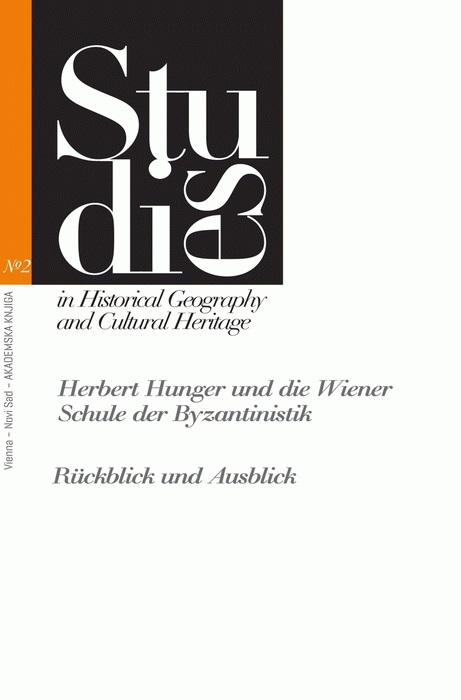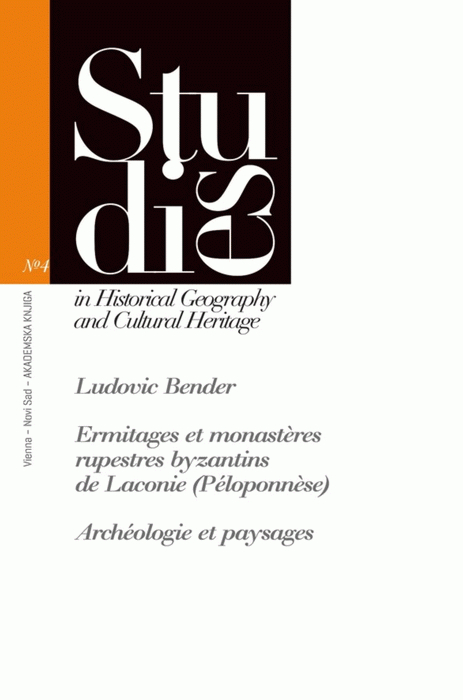Külzer, Andreas – Veronika Polloczek – Mihailo St. Popović (Hrsg.) : Raum und Geschichte. Der historische Atlas "Tabula Imperii Byzantini" an der Österreichischen Akademie der Wissenschaften
69,00 €*
Andreas Külzer – Veronika Polloczek – Mihailo St. Popović (Hrsg.), Raum und Geschichte. Der historische Atlas "Tabula Imperii Byzantini" an der Österreichischen Akademie der Wissenschaften(Studies in Historical Geography and Cultural Heritage, 3)Novi Sad 2020ISBN 978-86-6263-305-7
239 S./pp., zahlr. Farb- und S/W-Taf./num. colour and b/w-pls., 22,5 x 14 cm; kartoniert/hardcover
Külzer, Andreas – Mihailo St. Popović (Hrsg.) : Space, landscapes and settlements in Byzantium: Studies in historical geography of the Eastern Mediterranean Presented to Johannes Koder
99,00 €*
Andreas Külzer – Mihailo St. Popović (Hrsg.), Space, landscapes and settlements in Byzantium: Studies in historical geography of the Eastern Mediterranean Presented to Johannes Koder (Studies in Historical Geography and Cultural Heritage, 1)Novi Sad 2017ISBN 978-86-6263-191-6
526 S./pp., Illustrationen, Karten, 22,5 x 14 cm; kartoniert/hardcoverBeiträge teilweise englisch, teilweise deutsch, 1 Beitrag russisch in kyrillischer Schrift
Külzer, Andreas (Hrsg.) : Herbert Hunger und die Wiener Schule der Byzantinistik. Rückblick und Ausblick
69,00 €*
Andreas Külzer (Hrsg.), Herbert Hunger und die Wiener Schule der Byzantinistik. Rückblick und Ausblick(Studies in Historical Geography and Cultural Heritage, 2)Novi Sad 2019ISBN 978-86-6263-243-2
350 S./pp., zahlr. Farb- und S/W-Taf./num. colour and b/w-pls., 22,5 x 14 cm; kartoniert/hardcover
Bender, Ludovic : Ermitages et monastères rupestres byzantins de Laconie (Péloponnèse). Archéologie et paysages
89,00 €*
Ludovic Bender, Ermitages et monastères rupestres byzantins de Laconie (Péloponnèse). Archéologie et paysages(Studies in Historical Geography and Cultural Heritage, 4)Novi Sad 2022ISBN 978-86-6263-412-2
381 S./pp., 79 Farb- und S/W-Taf./colour and b/w-pls., CD-ROM; 22,5 x 14 cm; kartoniert/hardcover
The landscape of the Southeast Peloponnese (Laconia, Greece), a very
important region of the Empire in the context of the late Byzantine
period, was comprised of important bishopric centers, such as Mistra
and Monemvasia, as well as numerous villages, powerful monastic
foundations, and smaller hermitages frequently built in caves and
isolated settings. Grounded both on systematic fieldwork and detailed
surveys of the monuments, this book is the first comprehensive study
of the eremitical and monastic landscapes of the region.
It investigates the
interactions of isolated hermits and established communities, the
relationships of large monasteries to smaller foundations, and the
interweaving of monastic and rural economies. It aims at identifying
the monks themselves, their preoccupations and aspirations, which are
reflected not only by the choice of the patron saints of the holy
places they founded or the content of the painted decoration but also
by the choice of location or a deep relationship with natural
elements of the landscape.




